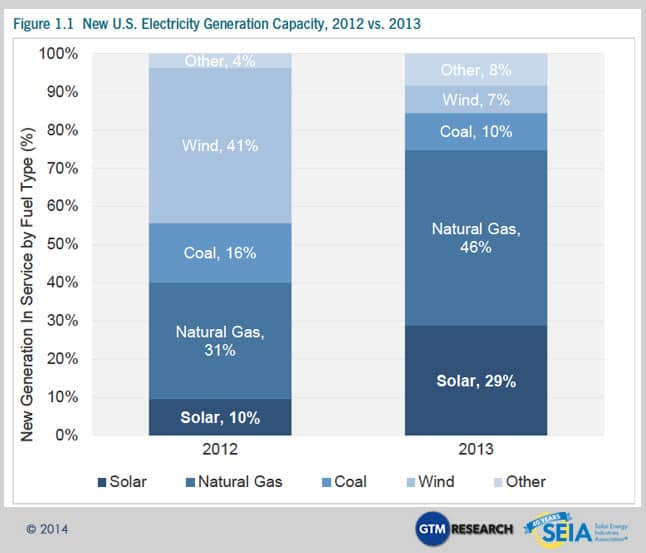As the need for renewable energy continues to grow in the world today, solar power is on the rise as one way that humans can cut out the burning of fossil fuels. In 2012 alone, there was a 41% increase in solar panel installations in residential areas, with the price of installation actually falling by 15% throughout the year. In 2013, the United States installed 4,751 MW of Solar PV- 15 times the amount that was installed just 5 years earlier in 2008. Today, there are over 445,000 solar systems operating in the United States today, including setups in both residential homes and large solar plants. Further, US solar output is equal to 15.9 gigawatts- enough to power 3.2 million homes.

However, the obvious problem with solar energy lies in the fact that cells can only truly be effective when it is sunny. On a given day, you could assume that it would really only be maximally bright for panels when the sun is about directly in the sky or angled properly towards the panels. Additionally, the technology we have today does not allow for the most efficient storage of power. This makes them much less efficient, however they are not useless when there is no sun. When your home does not use all of the power the panels produce throughout the day, the leftover energy will be sent to the power-grid that the entire area uses. Further, the power company will often pay the owners back for some of the ‘shared’ power.
If one solar panel can produce 70 Milliwatts per Sq. Inch and you assume that the sun is optimal for about six hours, you can calculate that the panels are producing about 420 milliwatt hours per day (70 * 6 = 420)- or 153,300 per year (420 * 365). On the contrary, it takes approximately 1.09 pounds of burned coal to produce 1 kwh. Therefore, one could calculate exactly how much coal must be burned to produce the same amount of energy as a solar panel in a year:
153,300 kwh/1 year * 1.09 lbs of coal/1 kwh = 167,097 lbs. of coal/year per home
Obviously solar energy is not perfect, however as storage technology grows and price becomes cheaper, it will continue to become a more popular source of energy in the US and around the world.
Source 1: http://www.seia.org/research-resources/solar-market-insight-report-2013-year-review
Source 4: http://home.howstuffworks.com/green-living/question418.htm

If you are measuring the power output of a solar panel in (milli)watts per square inch , then the area of the panel (in square inches) needs to factor into your calculation somewhere.
I really agree that solar power as one of the sustainable energy sources, along with wind power, geothermal, and other clean energy will become more popular in not only America but also in other countries. Collecting geothermal energy and hydro-energy may need some professional work to achieve, such as geothermal exploration and dam construction, but using solar energy is very doable for even single family as you mentioned, and things like creating a solar energy sharing neighborhood can be even more efficient.